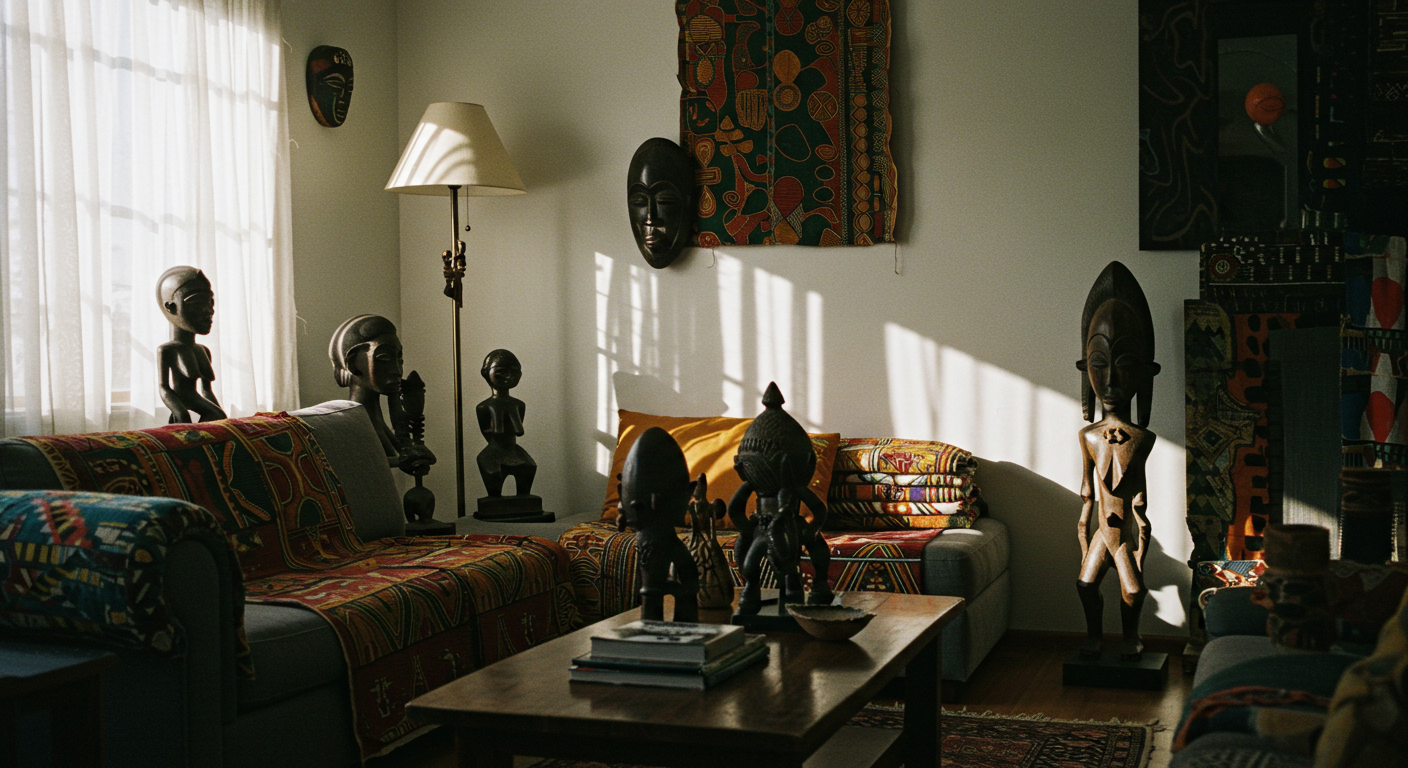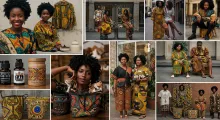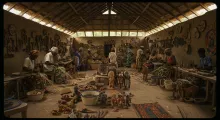African motifs are more than decorative symbols — they are visual languages. Passed down through generations, these patterns encode stories, values, and cosmologies. When thoughtfully integrated into home décor, they offer not just aesthetic charm but cultural depth. Whether embroidered on textiles, etched into wood, or painted onto pottery, these motifs carry meanings that enrich your space with intention and identity.
This article explores common African motifs used in home décor, their meanings, and how to incorporate them respectfully into modern living spaces.
1. Adinkra Symbols – Wisdom from Ghana
Originating from the Akan people of Ghana, Adinkra symbols are some of the most recognizable African motifs. Each symbol represents a concept or proverb.
Examples:
Duafe (wooden comb): Symbol of cleanliness, feminine virtue, and love.
Eban (fence): Safety and security in the home.
Gye Nyame: “Except for God” – symbol of divine power and resilience.
Décor ideas:
Use printed Adinkra fabrics for throw pillows.
Frame Adinkra symbols in minimalist black or gold frames as wall art.
Engrave or stencil these symbols on headboards, cabinets, or entryway walls.
2. Mud Cloth (Bogolanfini) – Malian Storytelling in Fabric
From Mali, mud cloth is traditionally made by painting fermented mud onto handwoven cotton. Each geometric motif tells a story — of social status, historical events, or local beliefs.
Common motifs:
Circle dots: Represent the rhythm of life or fertility.
Zigzag lines: Signify ancestral paths or journeys.
Chevrons and triangles: Represent balance or female power.
Décor ideas:
Use mud cloth as throw blankets, table runners, or upholstery fabric.
Wrap canvas panels in mud cloth for textured wall art.
Print patterns onto lampshades or fabric planters.
3. Ndebele Wall Art – South African Color and Identity
The Ndebele people of South Africa are known for their bold, colorful geometric wall paintings, traditionally created by women to express identity and defiance during apartheid.
Motifs:
Triangles, diamonds, and grid-based patterns filled with vibrant colors.
Often used to signify family milestones or social transitions.
Décor ideas:
Paint a Ndebele-inspired mural or accent wall.
Use patterned wallpapers or cushions inspired by their signature color-blocking.
Frame photographs or prints of original Ndebele homes as cultural art.
4. Kuba Cloth – Geometry from the Congo
Woven and embroidered by the Kuba people of the Democratic Republic of Congo, Kuba cloth is made from raffia palm fibers and features labyrinthine geometric patterns.
Motifs:
Repeating blocks, spirals, and interlocking lines — symbolizing continuity, unity, and the cyclical nature of life.
Décor ideas:
Hang Kuba cloths as wall tapestries.
Use as decorative throws on beds or sofas.
Upholster chairs or ottomans in Kuba-inspired fabric.
5. Tuareg Symbols – Nomadic Wisdom from the Sahara
The Tuareg people of North Africa use symbols in jewelry, leatherwork, and textiles to convey guidance, direction, and spiritual protection.
Motifs:
Crosses (like the Agadez cross): Represent the four cardinal directions and safe journeys.
Diamond and star shapes: Reflect the desert night sky and guidance from ancestors.
Décor ideas:
Add Tuareg symbols to leather furniture, coasters, or book covers.
Incorporate silver or metal wall accents inspired by their designs.
Layer rugs or cushions with North African tribal prints.
6. Zulu Beadwork Patterns – Codes of Communication
Zulu beadwork from South Africa isn’t just ornamental — it's a form of coded language. Color combinations and patterns express emotions, relationships, or social status.
Colors and meanings:
Red: Love and strong emotions.
Blue: Fidelity and spirituality.
White: Purity.
Black: Marriage or rebirth.
Décor ideas:
Use beaded Zulu items like coasters, placemats, or light fixtures.
Display framed beadwork panels with legends explaining the color codes.
Add color-coded hanging décor for cultural storytelling.
7. Calabash Carvings – Symbols on Everyday Items
Calabashes (gourds) are used across many African cultures for food storage, water, and music. In Nigeria, Kenya, and Ethiopia, they are often decorated with symbolic carvings.
Motifs:
Sunbursts, fertility symbols, and totemic animals.
Patterns of dots or lines representing family, bounty, or divinity.
Décor ideas:
Use carved calabashes as centerpieces or wall hangings.
Place smaller ones on shelves or tables to hold dry goods.
Use as pendant lamps by hollowing and wiring them.
Tips for Thoughtful Integration
Curate, don’t clutter: Let each motif breathe and tell its story.
Mix old and new: Combine antique pieces with modern frames or minimal furniture.
Support artisans: Purchase directly from African makers or through ethical fair-trade platforms.
Educate guests: Add subtle placards or notes beside symbolic pieces to inform viewers of their significance.
Decorating with African motifs isn’t just about design — it’s about meaning. These symbols bring centuries of wisdom, tradition, and resilience into your living space. When thoughtfully chosen and placed, they do more than beautify a room — they honor heritage, inspire reflection, and make your home a sanctuary of culture and storytelling.



